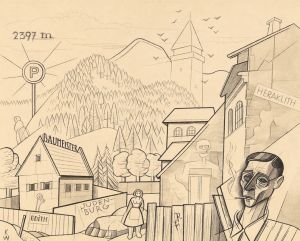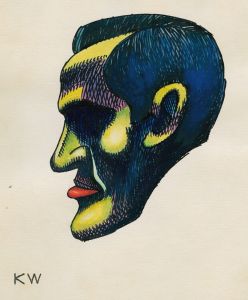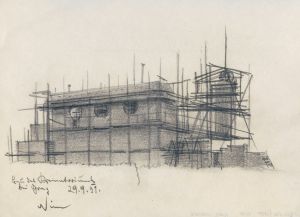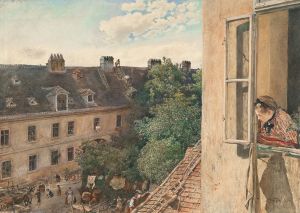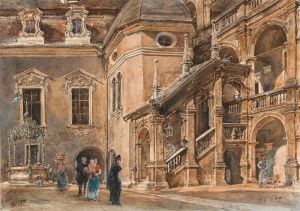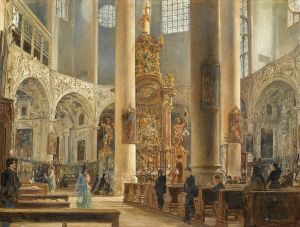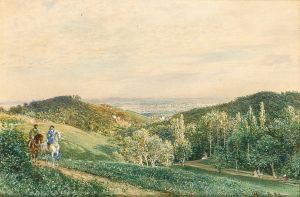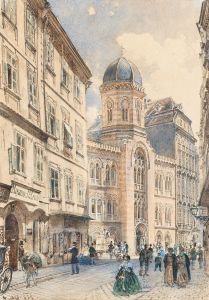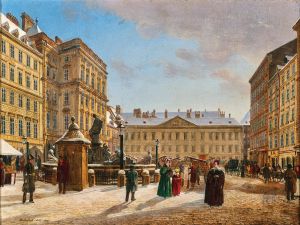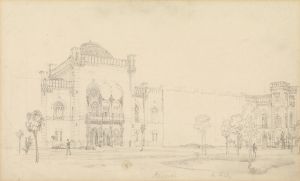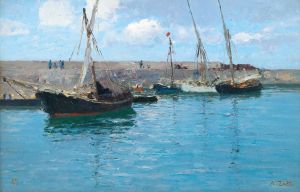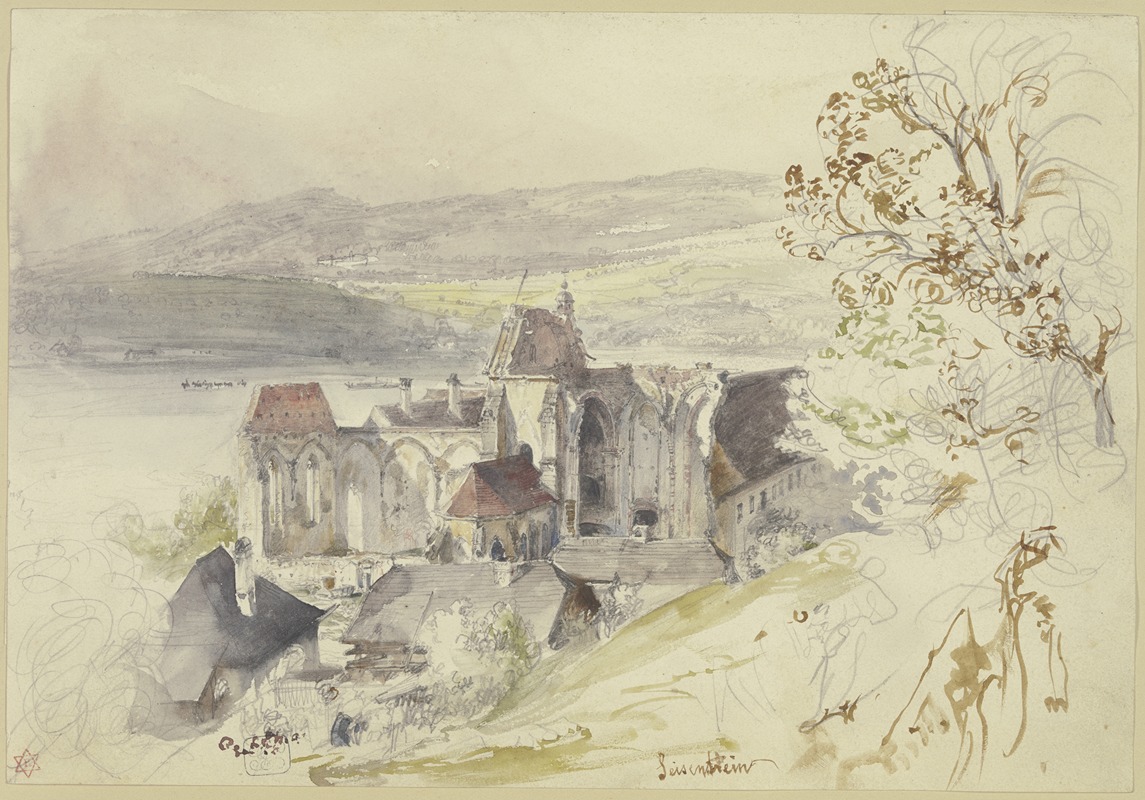
Die Ruinen der Klosterkirche Säusenstein an der Donau
A hand-painted replica of Rudolf von Alt’s masterpiece Die Ruinen der Klosterkirche Säusenstein an der Donau, meticulously crafted by professional artists to capture the true essence of the original. Each piece is created with museum-quality canvas and rare mineral pigments, carefully painted by experienced artists with delicate brushstrokes and rich, layered colors to perfectly recreate the texture of the original artwork. Unlike machine-printed reproductions, this hand-painted version brings the painting to life, infused with the artist’s emotions and skill in every stroke. Whether for personal collection or home decoration, it instantly elevates the artistic atmosphere of any space.
Rudolf von Alt's painting Die Ruinen der Klosterkirche Säusenstein an der Donau (The Ruins of the Monastic Church Säusenstein on the Danube) is a work by the renowned Austrian painter, known for his detailed and atmospheric depictions of landscapes, architecture, and urban scenes. Rudolf von Alt (1812–1905) was a prominent figure in 19th-century Austrian art, celebrated for his mastery of watercolor and his ability to capture the interplay of light and shadow.
This particular painting depicts the ruins of the Säusenstein Abbey Church, located near the Danube River in Lower Austria. Säusenstein Abbey, originally a Cistercian monastery, was founded in 1334 and remained active until its dissolution in 1789 during the reforms of Emperor Joseph II, which led to the closure of many monastic institutions across the Habsburg Empire. Following its closure, the abbey fell into disrepair, and parts of its structures, including the church, became ruins.
Von Alt's painting captures the serene yet melancholic atmosphere of the abandoned site. His attention to detail and use of light emphasize the textures of the crumbling stonework and the surrounding natural environment. The Danube River, a significant geographical and cultural feature of the region, is subtly referenced in the title, situating the ruins within their broader landscape.
The painting reflects von Alt's interest in historical and architectural subjects, as well as his ability to evoke a sense of time and place. It is an example of his broader body of work, which often focused on documenting the changing landscapes and architectural heritage of Austria and its neighboring regions during the 19th century.
While specific details about the creation date or current location of this painting are not provided in available sources, it is consistent with von Alt's artistic style and thematic interests during his career. His works are held in numerous collections, including the Albertina Museum in Vienna, which houses many of his watercolors and drawings.
This painting serves as both an artistic and historical document, preserving the memory of a once-thriving monastic community and its architectural legacy, while also showcasing von Alt's skill in capturing the beauty and transience of his subjects.





